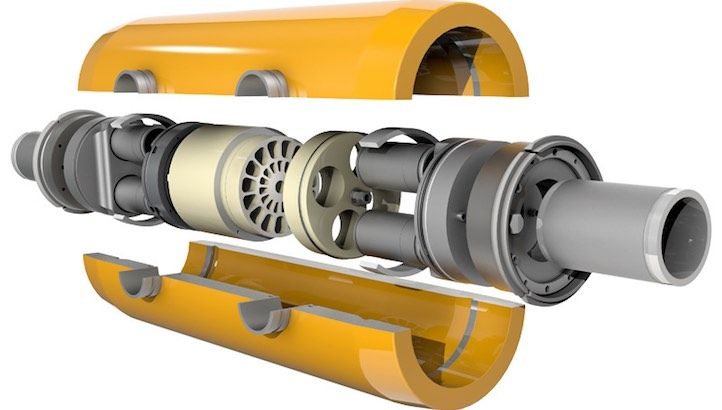Pressure Exchangers to Reduce Power Consumption for All Desalination Projects in UAE
Published on by Water Network Research, Official research team of The Water Network in Technology
The PX Pressure Exchangers supplied to UAE desalination facilities are expected to reduce power consumption for all projects by 21.7 megawatts (MW).

PX Pressure Exchanger® by Energy Recovery, Inc.
Energy Recovery, Inc., a leader in pressure energy technology for industrial fluid flows, has announced total awards of $4.9 million to supply its PX® Pressure Exchanger® technology for desalination projects in the United Arab Emirates (UAE).
The PX-Q300 Pressure Exchanger, part of Energy Recovery's PX Q Series line, operates more quietly than the standard PX product line while delivering valuable energy savings to customers. Exchangers supplied to these desalination facilities will reduce power consumption for all projects by 21.7 megawatts (MW), saving over 187-gigawatt hours (GWh) of energy per year.
The energy savings are approximately equivalent to the total electricity consumed by Dubai over one and a half days.
Source: Utilities Middle East
The website recently reported that Dubai Electricity and Water Authority (DEWA) achieved world record results in the Sustainability Culture Indicator, achieving 90.17% in 2018 compared to 88.83% in 2017, exceeding the global average of 61% achieved by multinational organizations that completed the survey during the same year.
Media
Taxonomy
- Reverse Osmosis
- Technology
- Pumping System Design
- Technical Equipment
- Energy
- Energy Reduction
- Energy Efficiency
- Desalination
- Reverse Osmosis
- Desalination Pre-treatment
- Pumps
- Pumps Installation
- Pumps
- Pump
- Desalination plant operations coordinator
1 Comment
-
This addition of turbine/pump (pressure exchangers) is a material proof that Reverse Osmosis is starting to bang their heads against the wall ??..
Reverse Osmosis seawater desalination plants since their inception are dumping extra saline reject streams back into seas. The salinity of the Mediterranean, Red Sea, and Arabian (Persian) Gulf have increased so far from 35 gm/lit to about 48 gm/lit. The increase in salinity is ongoing, and now these desalination plants are facing the consequences of their wrong doing as the pressure needed to allow seawater go through their membranes is increasing (or the product flow rate is decreasing).
By the time of completion of this project to add these turbines/pumps, the increase in salinity will offset their merits.
We are offering a process to stop completely any return of salts to seas (Zero Liquid Discharge) and it does not rely on Reverse Osmosis again, our process relies on Room Temperature Evaporation, (if interested naturalseawaterdesalination.com)